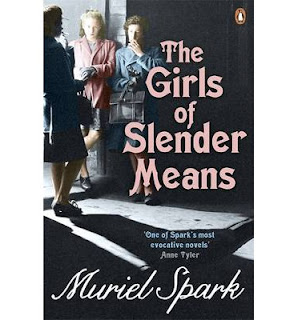Image may be subject to copyright
Book:
The Girls of Slender Means, by Muriel Spark
Publication date: 1963
WCRG meeting: 21 March 2018
Rating: 7
The novel is set in London in 1945 at the end of the war in a shabby/genteel boarding house for young ladies called the May of Teck Club. We meet the various girls of slender means and follow their lives and love affairs over a few weeks until a shocking event transforms the wry comedy of their existence into something suddenly tragic and baleful.
The book is just a small volume, and Spark’s writing style is very sparse, but very dense with lots of layers behind it. Her dry way of writing was acknowledged and compared to be “almost like a very crisp Chardonnay”. Members enjoyed the irony and fun with tongue-in-cheek humour and play on words, for example the many meanings of ‘slender’ which were touched upon in the novel.
One question raised a few times was if, and how, the quotes of poetry Spark selected were relevant to the story, and maybe even a foreshadowing. A special shout out here to anyone who did look them all up. One example was the ‘Wreck of the Deutschland’ that appeared numerous times.
Some criticism involved the slow pace of Spark’s writing, and some members said that it was difficult to connect with the book and some of the character, but they still appreciated the quality of the writing. Others said that they either struggled with Spark before or felt it was a hard slog to get into this book.
Many enjoyed the description of publishing and “the world of books”, and the description of the immediate post-war period. “Spot on” was the comment from members who lived through the time.
Another member, who did read several of Muriel Spark’s books, sensed something dark in her books. One member commented that he found it a thing of its time: “twee”.
There was much about the status between women, between their looks, size, men. As well as the role of women: two possible futures for women, either to become spinsters or to get married. Another recurring theme was that of religion.
One participant became rather impatient with the book, as there was also a lot of repetition of themes and topics. Although he seemed to be one of the major characters in the book, Nicholas didn’t quite get explained, nor how and when he gets killed.
Many found it interesting how the focus shifted from one character to another and there is no clear main character throughout the book.
Overall, the book was well received and book club members were impressed with how Muriel Spark created a whole world with very few words. A very simple novel on the surface, but very complex underneath.
It received a score of 7.













